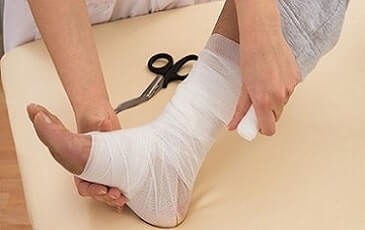Best Orthopedic Doctor in Hyderabad
Polytrauma
Shock occurs to a person who is affected by multiple injuries, trauma, heatstroke, blood loss, severe infection, poisoning, and burns. It is a life-threatening condition when a person is in shock many organs will not be receiving enough blood or oxygen. This may lead to permanent damage to the organs or may even cause death.
Crush syndrome or Rhabdomyolysis is a serious syndrome which is caused due to many traumatic and non-traumatic conditions. It happens due to muscle injury that occurs due to accident, building collapse, electric shock, burns, non-traumatic conditions such as – consuming alcohol, extreme muscle strain (mostly athletes) etc., It is a life-threatening condition that may need urgent care. It is caused due to the death of muscle fibers and the release of their contents into the bloodstream and causes kidney failure or even death.
Compartment syndrome is a condition that occurs when excessive pressure builds up inside an enclosed muscle space inside the body to dangerous levels. It happens due to bleeding or swelling after an injury. This pressure may decrease the blood flow, which prevents nourishment and oxygen from reaching nerve and muscle cells. This syndrome can be either acute or chronic.
Pre-peritoneal pelvic packing (PPP) is a technique used for treating patients with pelvic hemorrhage with pelvic fractures and hemodynamic instability after a high-energy trauma representing a life-threatening situation. This particularly occurs in the setting of polytrauma.
Damage control orthopedics (DCO) is used by surgeons to manage critically injured patients by temporarily stabilizing fractures to improve the patient’s overall condition. This procedure is done to avoid worsening the patient’s condition by the second hit of a serious orthopedic procedure. This will arrest bleeding, soft –tissue injury through efficient fracture stabilization.
Early total care is followed for early stabilization of major skeletal injuries in polytrauma patients. It involves definitive surgical stabilization of all long bone fractures during the early period of treatment. This is helpful during the decrease in the duration of ventilation, time in the intensive care unit, fat embolism syndrome, multiple organ failure, and late sepsis.
Bladder injury occurs due to blunt, penetrating, or iatrogenic trauma. It often occurs when the pelvis is injured due to accidents or fall. It may also occur unintentionally during pelvis related surgery, lower abdomen such as uterus removal, cesarean delivery, or removal of the colon.
Morell levelle lesions are shearing injuries resulting in separation of skin and subcutaneous tissue from the deep fascia. This condition might have caused due to vehicle accidents, falls, or sports. These effusions may be associated with pelvic, acetabular fractures or in the absence of fracture it might have occurred due to blunt trauma.
Resuscitation of Polytrauma Patients- along with brain trauma, copious bleeding, musculoskeletal injuries are the most severe complications faced by the patient. These would need surgical intervention to get functional outcome and quality of life. The risk of organ failure, bleeding, consequently, hypotension develops. In the case of injury of pelvis or abdomen, this approach helps in damage control. A contrast CT scan is done in case of emergency situations so that the pelvic and spinal fractures are not missed out by conventional radiological studies. Fractures and pelvic dislocation that causes enlargement of the pelvic cavity, vertical instability need faster stabilization by closing the pelvic ring diameter to normal dimensions, after closure, angioplasty or packing has to be done to close the pelvic ring bleeding. Apart from pelvic fracture femur fracture is life-threatening. The immediate measures applied to save a person’s life are artificial respiration and cardiac massage.
Triage trauma is a process of sorting the patients according to the severity of the injury. The first stage of triage is done at the accident area and secondary triage is done at the casualty. This method is mostly utilized in battle or after a major accident so that those who are in serious condition are treated first.
Fat embolism is a rare condition caused when fat enters the bloodstream and causes blockage of blood flow. It enters into multiple organs including the brain. The typical symptoms are petechial rash, deteriorating mental status and respiratory insufficiency within 48hours of trauma with long bone fractures particularly the femur, tibia or pelvis or due to orthopedic surgery. Fat embolism is common and will settle down on their own; they will lead to a serious condition called as fat embolism syndrome, it can cause inflammation, multi-organ failure, and neurological changes which can be dangerous.
ARDS (Acute respiratory distress syndrome) occurs when fluid builds up in the tiny air sacs in your lungs. This fluid stops the lungs from filling sufficient air which results in less oxygen in the bloodstream. This will damage the organs which need oxygen to function. It occurs to people who are already ill.


